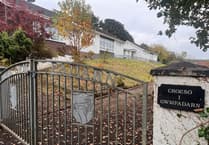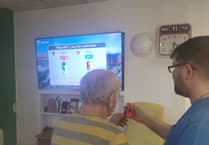As assiduous consumers of all things Cambrian News, I’m sure you agree that there is rarely an opening to dispute any opinion written. However, when art comes under fire as a ‘waste of money’ (How the Arts Council of Wales is wasting £200,000 of your hard-earned money, Cambrian News, 11 May), an irresistible opportunity is afforded to spout a contrary view; the view that it is impossible to offer artists too much support because the arts are the most important activities humans undertake.
Since the stone age, the world we understand, and how we feel about it, have been recorded in our art. Few give thought to the iron-age Welshman who cornered the Carmarthen wooden wheel market. Few relate to the medieval money lender who developed Aberystwyth town centre. Instead, we divine our heritage from Celtic art. We quote Welsh poets from Aneirin to Dylan Thomas. We admire the hand-painted tiles of Strata Florida. And if we live around here, we instinctively connect with moody and muddy landscapes by Kyffin Williams.
It is our artists who provide the richest and most accessible material in the national repository of Welsh experience, thinking, and beliefs. Through their skill in poetry, sculpture, painting, music, and literature we keep in touch with previous generations and are influenced by their long-gone cultures. It is through art that we know what Welsh is. Let us not forget that the front-footed Welsh Dragon is the collaboration of a relatively modern artist building upon an ancient poet’s idea of this Welsh spirit.
Our artistic continuum can be traced back at least 14,000 years to prehistoric cave carvings found on the Gower peninsular. Yet can we doubt that a deerskin-wrapped critic stood behind our iron-age artist, cave-mansplaining the work was pointless and the artist was wasting his time? But then as now, whether any passing individual derives pleasure or meaning from an artwork is not relevant to the debate. It is time that defines which art is important.
This is because while art may impress, inform, or influence, the ultimate destiny and true value of art is found in being part of a disparate library of creative voices that, as George Orwell explained, ‘deal with subjects important to the life of mankind and expresses something the artist genuinely feels’. This is what humans do. This is what humanity has always done.
Historically, our belief systems have motivated and commissioned much of our art. Within modern society, the responsibility needs shouldering by the broadest possible collective of individuals and organisations, and in doing so, solicit a range of artistic responses to the pressing issues of each turbulent era.
To extend an observation from Natural Resources Wales, in reasoning their support for a ‘Creative Nature’ partnership with the Arts Council of Wales - from Celtic times to the contemporary climate crisis, from rural cefn gwlad to the mountains of the industrial valleys and the coastal strips of steel works, the drama of the landscape, the culture and character of Welsh communities, and the imaginations of Welsh people have been captured in Welsh art.
And while there are many worthwhile claims to scarce funds, without supporting emerging and established artists, the global repository would be without the output of Shakespeare, Da Vinci and Rembrandt. Our nation, without the creative efforts of Taliesin, Ralph Vaughan Williams, and Shani Rhys James.
And so, if the arts are not the most important activities humans undertake, they’re not far off. And if contemporary Welsh arts and artists are not continually funded, not only will our important and idiosyncratic voice diminish in the world, but also Wales will forsake an irreplaceable understanding of itself.


.png?width=209&height=140&crop=209:145,smart&quality=75)
.jpeg?width=209&height=140&crop=209:145,smart&quality=75)

Comments
This article has no comments yet. Be the first to leave a comment.